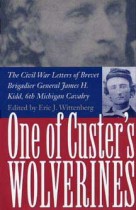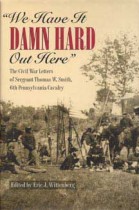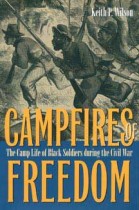At Custer’s Side
Eric J. Wittenberg | Filed under: Civil War Era
Eric J. Wittenberg presents many of this newspaperman’s captivating writings in their original form. Kidd wrote eloquently about his Civil War experiences, especially his service with Custer. His speech given at the dedication of the Custer monument in Monroe, Michigan is particularly important, as it provides readers with one of the first revisionist views of the tragedy that befell Custer at Little Big Horn. Much like Wittenberg’s first book of Kidd’s writings, this latest collection offers insightful, articulate, and entertaining commentary on what it was like to serve in the Civil War and with “the boy general.”










